
The lobby of the DoubleTree-Yarrow Park City bustles with activity, skiers carrying their equipment about, cinephiles gossiping about their favorite films. The Sundance Film Festival is in full swing, showcasing the world of independent cinema at its most ambitious.
Dressed in a purple velvet jacket and jeans, the gay director Frederic Tcheng joins me on a couch next to a roaring fireplace to discuss his third film, Halston.
A chronicle of the iconic fashion designer and personality of the 80s & 90s, Tcheng’s film aims to reintroduce the almost-forgotten gay man responsible for dressing icons like Iman and Liza Minnelli designer to the world. Using his celebrity and Hollywood connections, Halston became a multi-million dollar fashion house before a corporate acquisition robbed its namesake of his assets. Halston himself died from AIDS in 1990.
Produced by CNN Films, Halston will receive a theatrical release as well as air on the network in Spring 2019 before landing on Amazon streaming later in the year.
How about we take this to the next level?
Our newsletter is like a refreshing cocktail (or mocktail) of LGBTQ+ entertainment and pop culture, served up with a side of eye-candy.
Halston is a figure that I more knew as a reference joke than for his actual work. Did you ever see the YouTube comedy videos Sh*t Liza Minnelli Says?
FT: No, I need to see that!
She keeps screaming “HALSTON!”
[Laughter]
I was like, what’s Halston? So thank you for clarifying the point.
You’re totally right, because I didn’t know much about Halston either. To me, it was more the trope of Studio 54 and the sunglasses doing coke and the excess of that. And that, unfortunately, is the image most people have of him. And I was stunned when I started reading the story of the whole scope. From the 50s and the 80s to the corporate takeover, there’s just so much more to it, a truly American story in the same way Citizen Kane was: this incredible rise-and-fall.
Some of that was the 70s-80s party time period, but some of that was that he was the first major American designer, which is crazy. We don’t hear his name mentioned with other American designers like Donna Karan, Calvin Klein or Vera Wang.
I think that the legacy has been somewhat tarnished by the corporate takeovers. It takes a lot of work to maintain a brand image. After he passed away the brand was not in his hands, was not in his estate’s hands. He should be on the same level of Yves St. Laurent and brands like that which came out around the same time and are still making headlines. It’s part of the tragedy of Halston’s story.
So when did you decide you needed to make this film?
It’s really when I discovered the business storyline which resonated with me very strongly. I was at a point in my career where I had interactions with the corporate world, and they were very tricky. I was interested in talking about the creative vs. business [viewpoints] in the industry. And the fashion and movie industries are very similar in the sense that it takes a lot of people to make something happen. A lot of those people are business people, and you have to inherent sort of sell it to an audience. So when I read of Halston’s struggle and the way he was treated by the corporation, it struck a chord with me. And I really wanted to talk about it. It helped that I felt like I was reading a thriller. The characters are just so vivid. Halston was so larger-than-life and the businessmen were so nasty. It just felt so big. It felt like a story that resonated all the way until now.
You point out more than a few parallels with our current cultural moment.
The economic landscape hasn’t changed that much since Ronald Reagan deregulated the financial markets. And we sort of open the film with subtle references to Reagan and how it was “morning in America” again, with that campaign video from ‘84 which is exactly the same year Halston gets bought and ousted. So we live in that world that was created in the early 80s, this sort of financial capitalism world where the bottom line is everything. So it had a wider political spectrum for me—the story. When you have the personal, the political, the historical coming together, that’s what interests me in the story.

Homophobia pops up early in the film as something he encountered early in his career, but then curiously it sort of disappears because the fashion world was more accepting. So when you started to interview figures like Carl Epstein [a corporate mogul who helped take over the Halston brand], who generally speaks well of Halston, was that something you expected?
Absolutely. We put it in the film. I think it’s very subtle and we didn’t want to incriminate anyone as being homophobic. But you could tell by the way that people refer to Halston as being “Hollywood” what that means, or there being a lot of “pinky throw” around the office, or being an “airy fairy” creative person. All these terms are not innocent. I don’t know that they’re conscious of what they are saying, but that is what they are saying. I think that it was important for me to include that and to show the dynamic—that it was not just about business. There was also a world view at play.
The film comes off as an American story. It’s a business story, a cautionary tale, but it’s also a queer story and one that was lost in the shuffle of AIDS.
Yeah. The first anecdote about him being rejected at this society dinner is the first moment in the film where the audience is being stabbed in the stomach because it’s so brutal. It tells you so much about the dynamic of society in the 60s, and what he had to work against. I worked so hard to include that story because Halston’s assistant didn’t want to talk to me.
Really?
He was afraid of being portrayed negatively. He’d had previous experiences in documentaries where he was unhappy [with the way he was portrayed]. But he told me that story on the phone. So I invited him to lunch, I really seduced him in order to have that story. I needed it in the film.
In the film, Liza Minnelli has a very, very defined line as to what subjects she won’t discuss. How difficult was it to get people to talk about him in his dark times?
It was very difficult. As I said, there’s a lot of cliché going around about Halston, a lot of excess and hedonism. People are afraid it’s going to be caricatured. We had to do a lot of, sort of, damage control. We, let’s say, came with a lot of baggage of what had happened before with a lot of portrayals of Halston. It helped that Leslie Frowick, Halston’s niece who had worked for him, was the first person we interviewed. She opened up a lot of doors for us. His inner circle wouldn’t talk unless Leslie said it was OK. That helped tremendously.
The business people had no connection to Leslie, of course. She doesn’t even want to say their names on camera. But for them, it was always, am I going to be the villain of the film? It took a lot of explaining and showing my true colors. I’m not interested in making anyone a villain. I’m interested in talking about what happened from different points of view. The complexity is what makes a story rich. The audience will make up their mind as to what they think of certain actions. Once people understood that, and understood that I wasn’t after them for caricature, then it started to happen.
The most enigmatic character in the film is Victor Hugo, Halston’s longtime boyfriend and sometimes window dresser. Were people reluctant to talk about him? Your subjects often mention that he was there, or that he could be nasty to be around, but they don’t discuss their relationship dynamics. I assume Victor was also using drugs…
You see him using drugs in the film.
Yes, you do see him drugged out.
You see him with a spoonful of coke up his nose. It’s like in a mirror, it’s an Andy Warhol photo. People had all sorts of opinions about Victor. A lot of people were quick to point him out as the person that brought Halston down. A lot of people were angry because Victor came with a lot of negative aspects. But, my take—and what I try to show in the film—was that there was this creative dialogue between them. So yes, he was a negative force, but he allowed Halston to be a positive force. They have this dynamic that is fascinating to me. I don’t think Halston would have—he would have been different without Victor Hugo. So that was constructed as a sort of push and pull of different takes on Victor. There’s the gossipy and there’s the psychoanalytic. Then Victor says “it’s all gossip” and he tells his own version, which is that Halston is a magician, that he brings magic in life. So it was important for me to not have him be just one thing.

Photo by Berry Berenson
Halston and Warhol influenced each other. The Factory crowd hangs out with Halston, Andy’s using the window displays as pop art. One thing that’s interesting about that though is that Warhol is known for sort of using people, and not being a good friend. Halston comes off as the total opposite: he’s completely loyal, almost to a fault at times. What did you find when you were talking to people about the Haslton-Warhol friendship?
They were from the same sort of background and had come to New York to reinvent themselves. And like I did, really.
[Laughter]
Like a lot of us did. As gay boys, they had that in common—this sort of fascination with Hollywood. And I think that they each recognized the genius of the other person. They collaborated on dresses. Liza, at one point, is wearing Warhol flowers on a Halston dress. Warhol did a lot of the advertising for Halston with silk screens.
Warhol is so weird.
They had this fascinating with each other. A lot of people were cynical about their bond and said they were business associates, that Halston had access to all the ladies, and Halston wanted access to all the ladies. But I think it went much deeper than that.
Halston treated his models as intelligent people, and they suddenly felt I am an artist. He brought this out of people, and he saw beauty where not everyone did at that time. He also—and you don’t go overboard on this point—loved a diverse group of models way before anyone else. He used a lot of women of color, and a woman like Pat Ast who was plain and overweight.
I think he was responding to the life force of people around him. I think he was sort of like Warhol, to go back to your earlier point, he did have an entourage. He understood very quickly that he needed people to embody his ideas. He would always say, just like Charles James, “You’re only as good as the people you dress.” He wanted the best people. And he was incredibly funny and loyal, so I think these ladies just gravitated toward him. I think some were even physically in love with him. He had that magnetism a lot of people talk about. He was able to captivate your attention and make you feel like you were the center of the world.
Related: McQueen filmmaker Ian Bonhôte: There were dark elements in Alexander
You set the scenes with voiceover, you use noirish music to set up the mystery of Halston. Like you mention in the film, it’s like Citizen Kane—where is his Rosebud? Why did you decide to stage part of the documentary instead of just using interviews and archive footage?
It came really early on as I was starting to read the story and do the research because I felt like I didn’t have the full story and needed to do a lot of investigative work. I loved doing that, and I became really thrilled by all the discoveries I was making. So I wanted the audience to feel that sense of investigation. And what I like about investigation is that it’s not just the form of it, it’s the idea that the truth is elusive and you can stab at it from different angles. But just like Citizen Kane, who do you believe? I felt like when I was interviewing people, everyone had a different take that said as much about Halston as it did them as human beings. So the idea of having a surrogate for the audience, or for me as an investigator of the film, was really thrilling. It made the storytelling fun. I watch a lot of films and I’m interested in films that try to do things differently. I had done fashion documentaries before. I felt like I didn’t want to do the same thing over and over again.

For you as a filmmaker, what attracts you to these fashion stories?
It’s just so ridiculously bigger than life. Everything in fashion is sort of portrayed as outrageous and fun in a way. But at the core, it always reflects the times people live in. So through Diana Freeland you can talk about the spirit of the 60s. Through Halston you can talk about the corporate environment, and the 80s. Fashion is a mirror of the times, but it’s also a fun-house mirror of the times. Everything is more dramatic. It’s like the Hollywood version of reality. It’s also a world of images, which, as a filmmaker, is what you live for. That’s also what I saw in Halston—he was someone building his own image, sort of in the same way that everyone does now with their phones and Instagram. But he was doing it on a world scale and was one of the first to become a spokesperson for his brand.
What’s the status of the Halston collection now? I know some of it has been rediscovered. Let it be said here too that his designs usually used only one piece of fabric, with one seam. Which is crazy, to visualize something like that.
That blew my mind, going to FIT and seeing those patterns. It was genius the way they displayed them as paintings because they are works of art—the patterns themselves. I had no idea. The clothes look so simple. And you can see a lot of those ideas in today’s clothing, and his minimalism.
In terms of the collection, Leslie Frowick has managed to gather a lot of the pieces, and she is working with the Fashion Institute of Technology. She did a show last summer, and has another that she’s working on. He deserves the same platform as Yves St. Laurent and all these other great designers. I don’t understand why that hasn’t happened. I really hope this film changes that. People need to realize what kind of genius he is. He’s been too often dismissed as a stylist or just too simple. They mistake simple for easy, which is very far from the truth.
It’s important to have people know it’s a positive story, and that’s what I’ve tried to infuse in the film. The idea of pushing boundaries—that’s how Halston lived his life, that’s how Liza Minnelli lives. In the film, I chose one song she sings that’s all about that: Saying yes to life.
Halston will have a theatrical release in Spring 2019, and shown on CNN, and later, on Amazon.

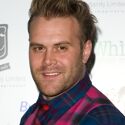
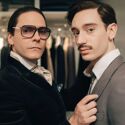
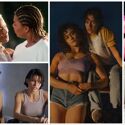
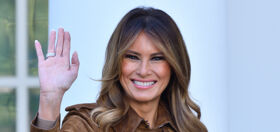

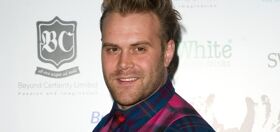
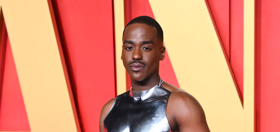

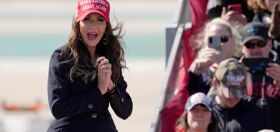
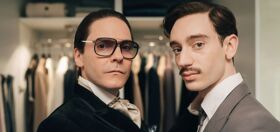
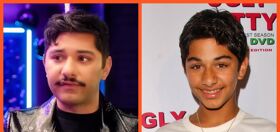


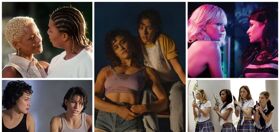
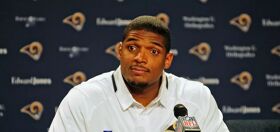

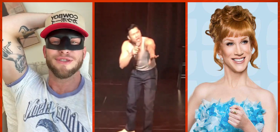
Daggerman
homosexuality always had a great presence on all aspects of art….it’s a shame all hetero-wankers refused to see beyond the sexual activities of gays…but there again butch gay men will betray flamboyant gay men also…